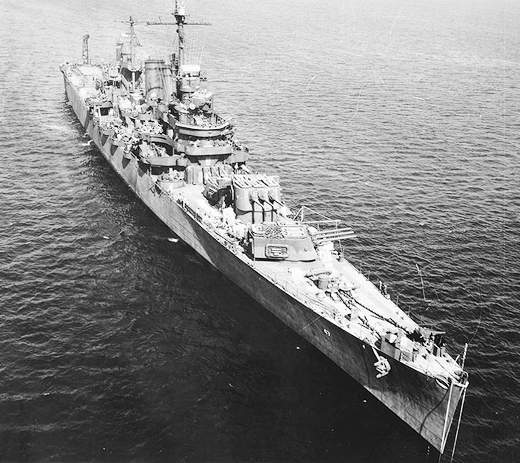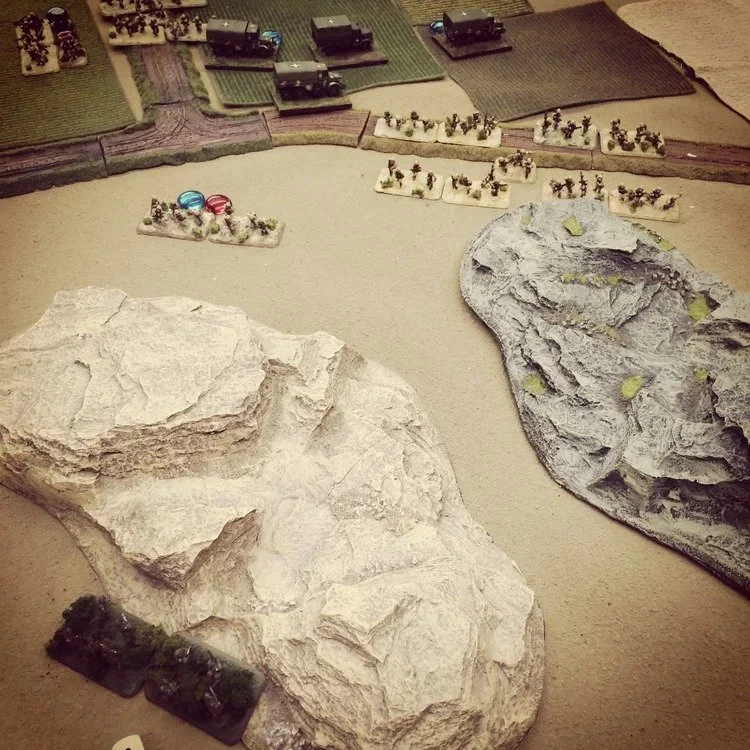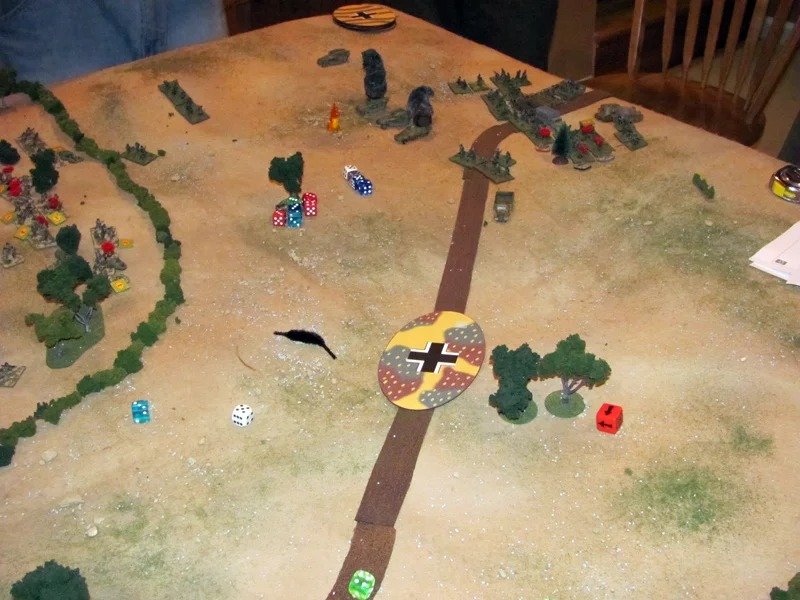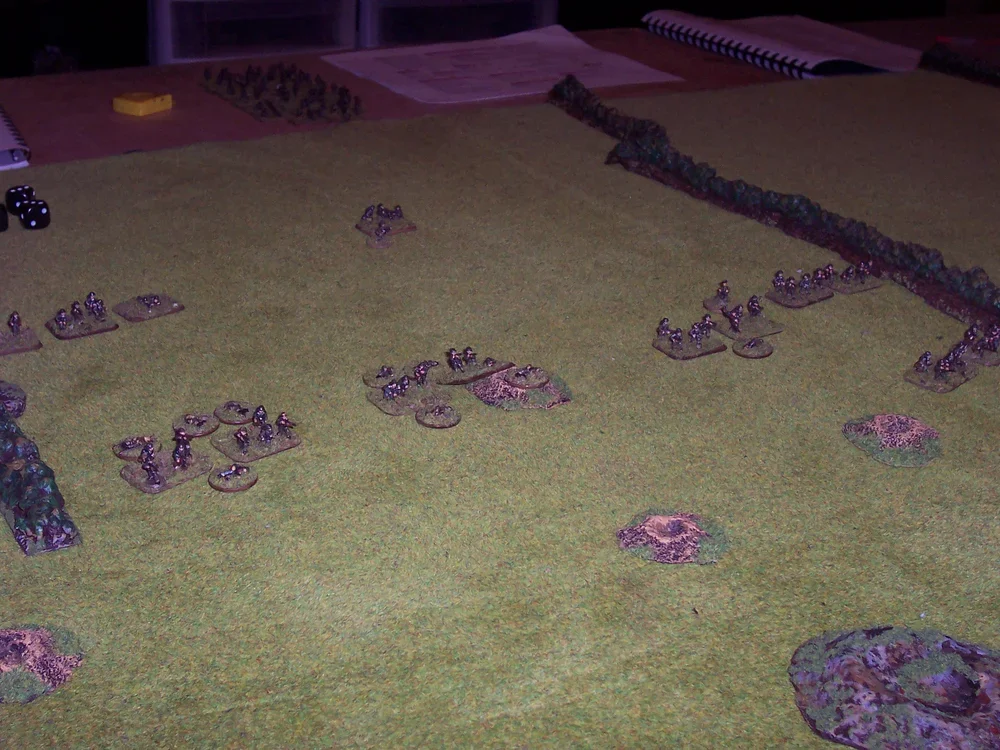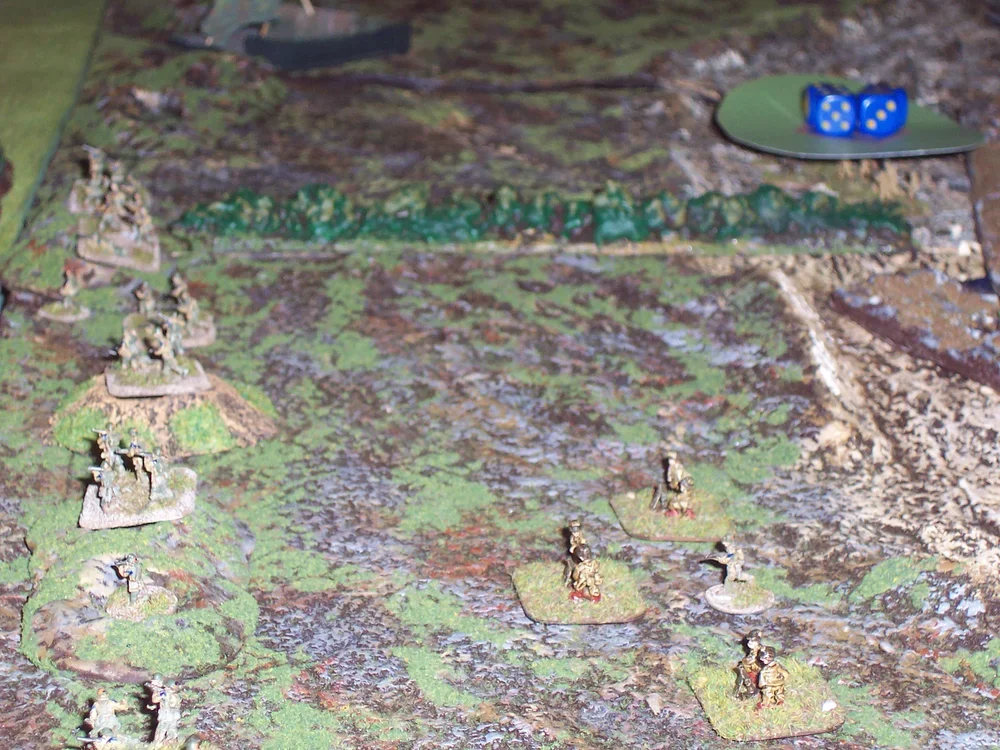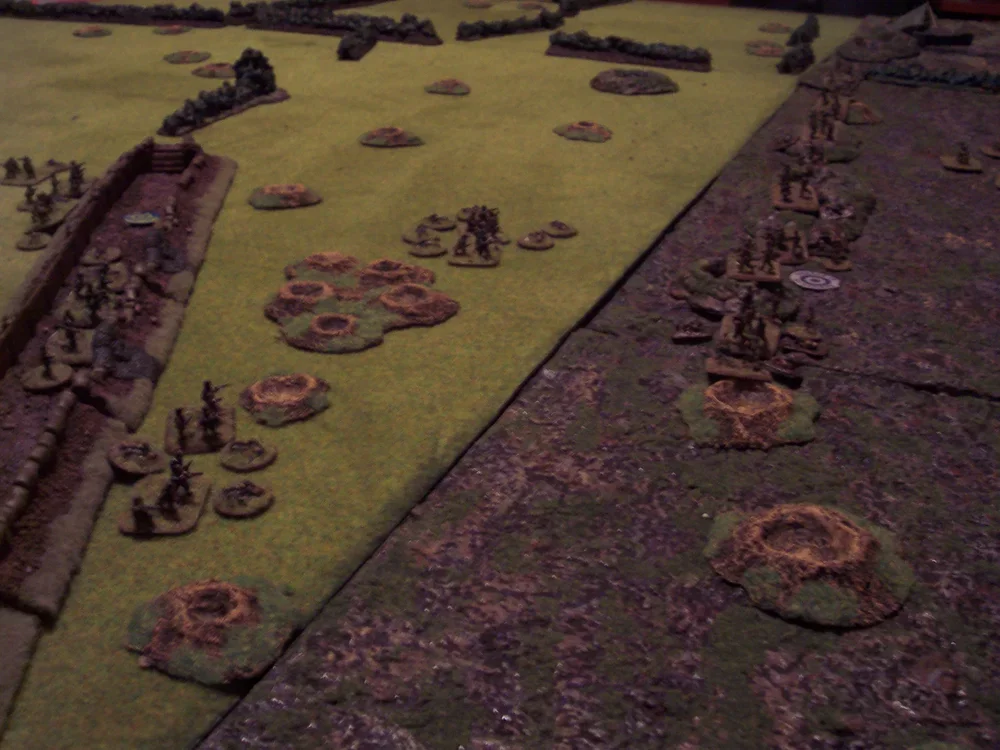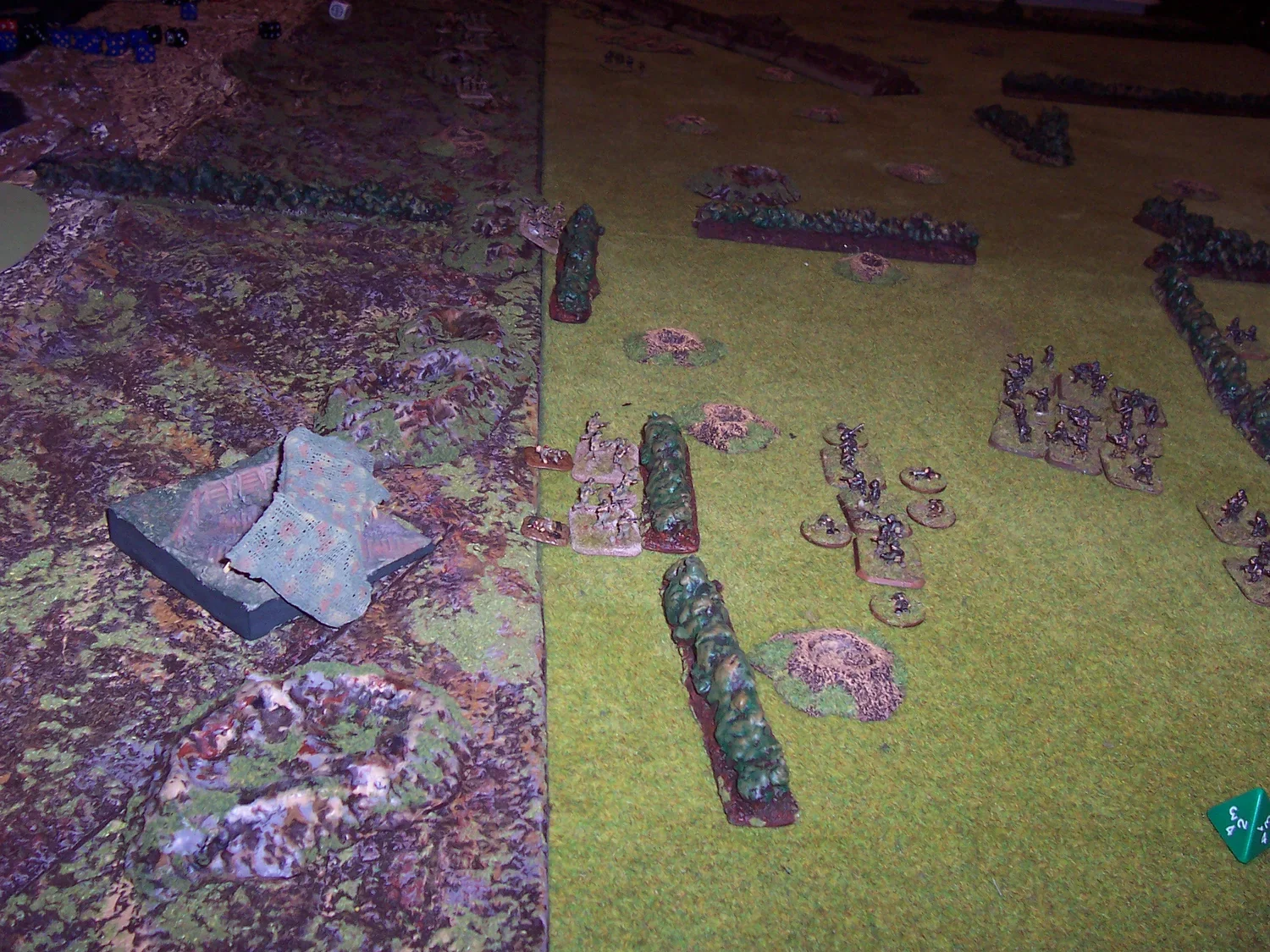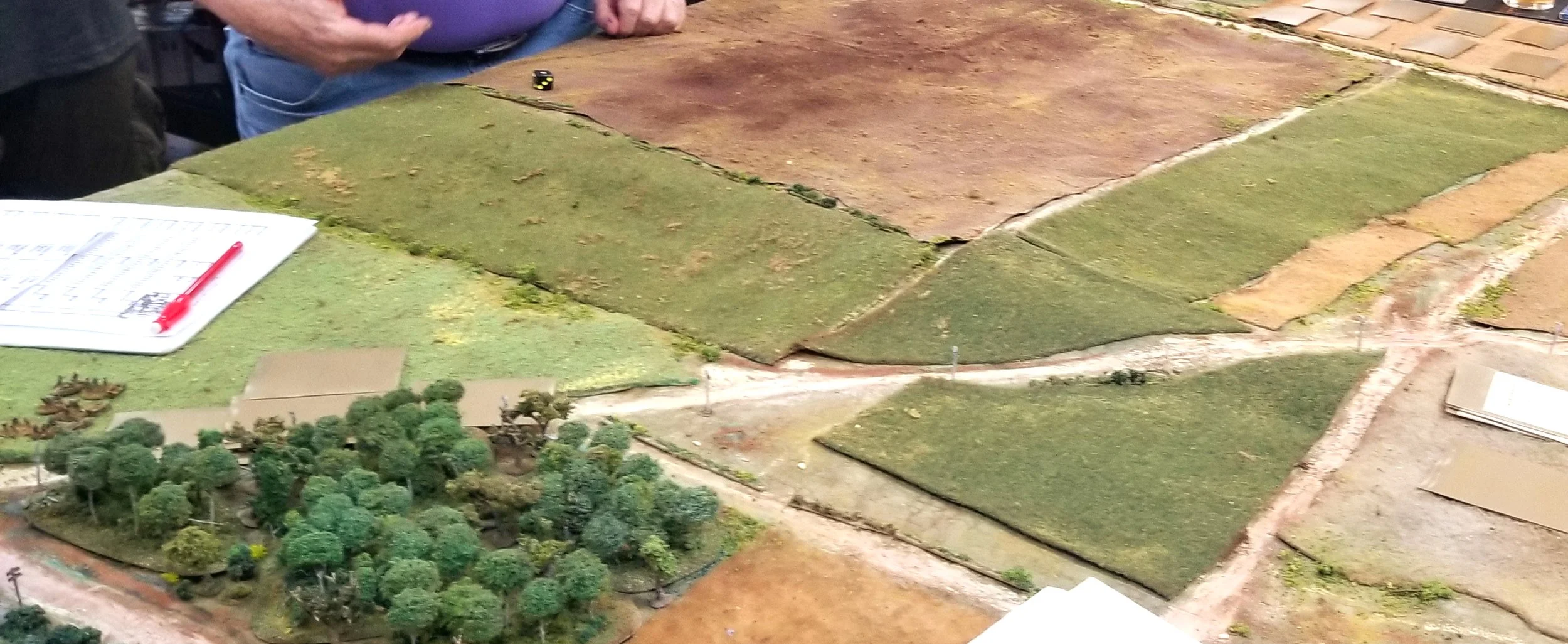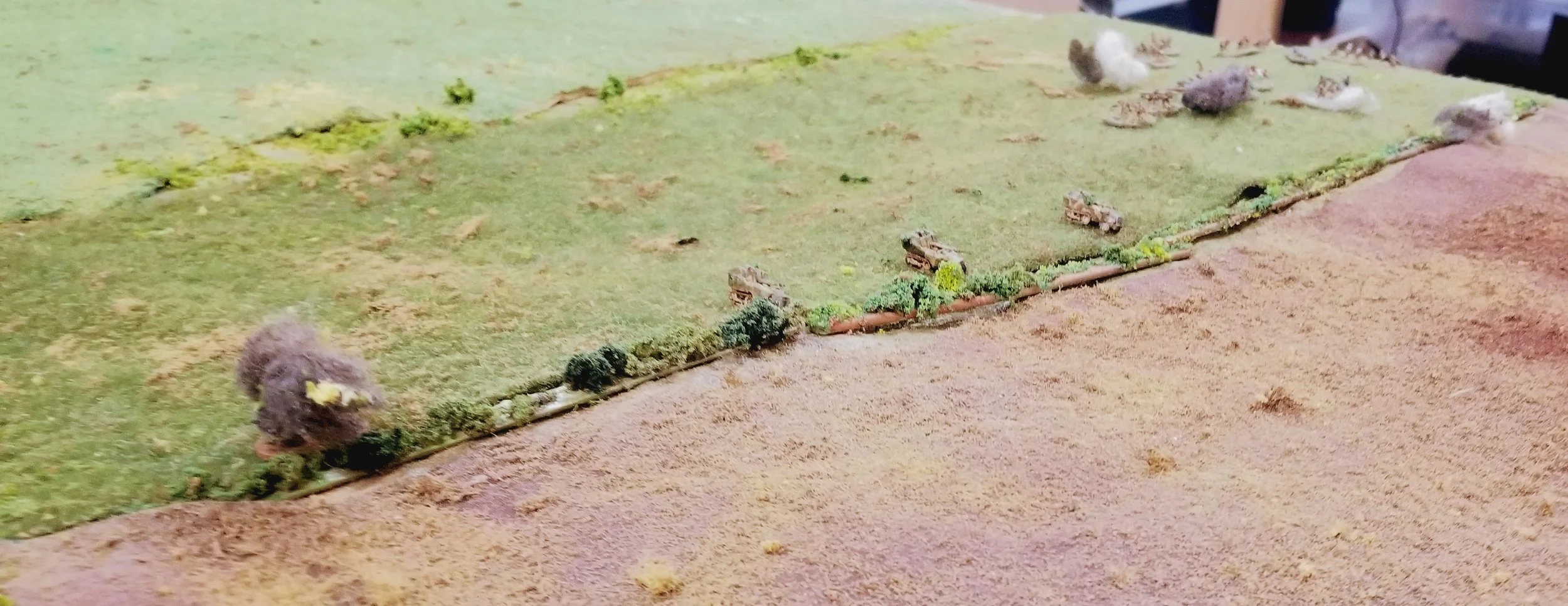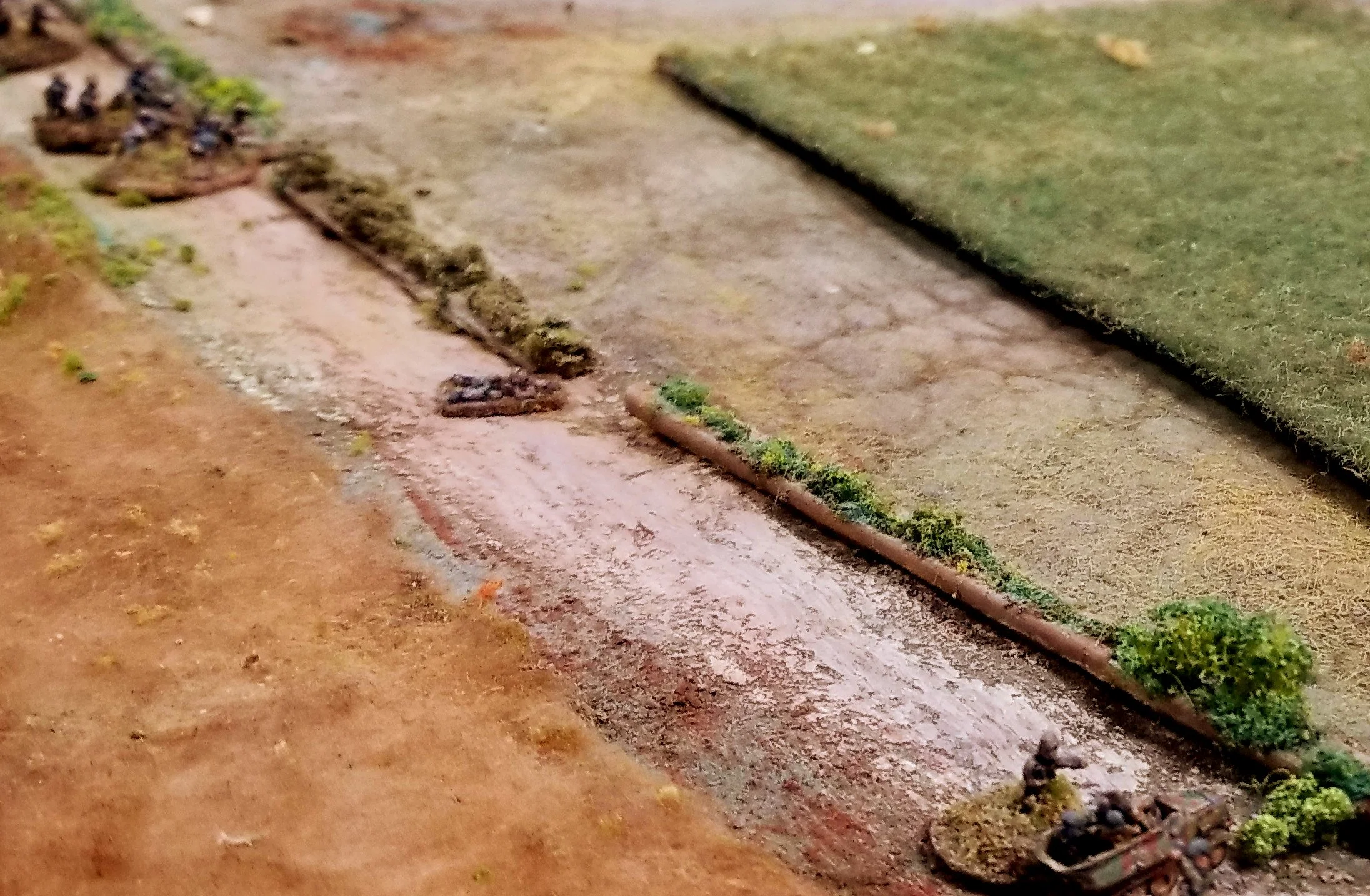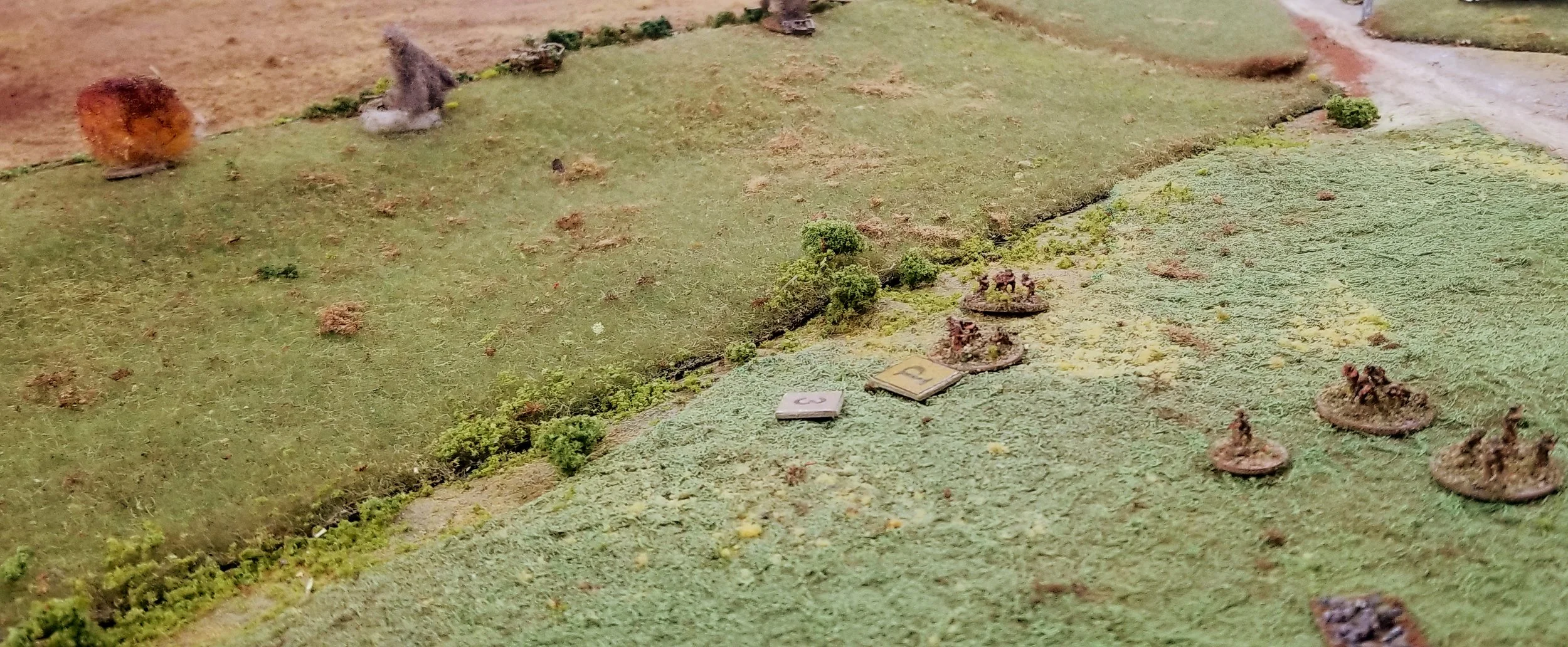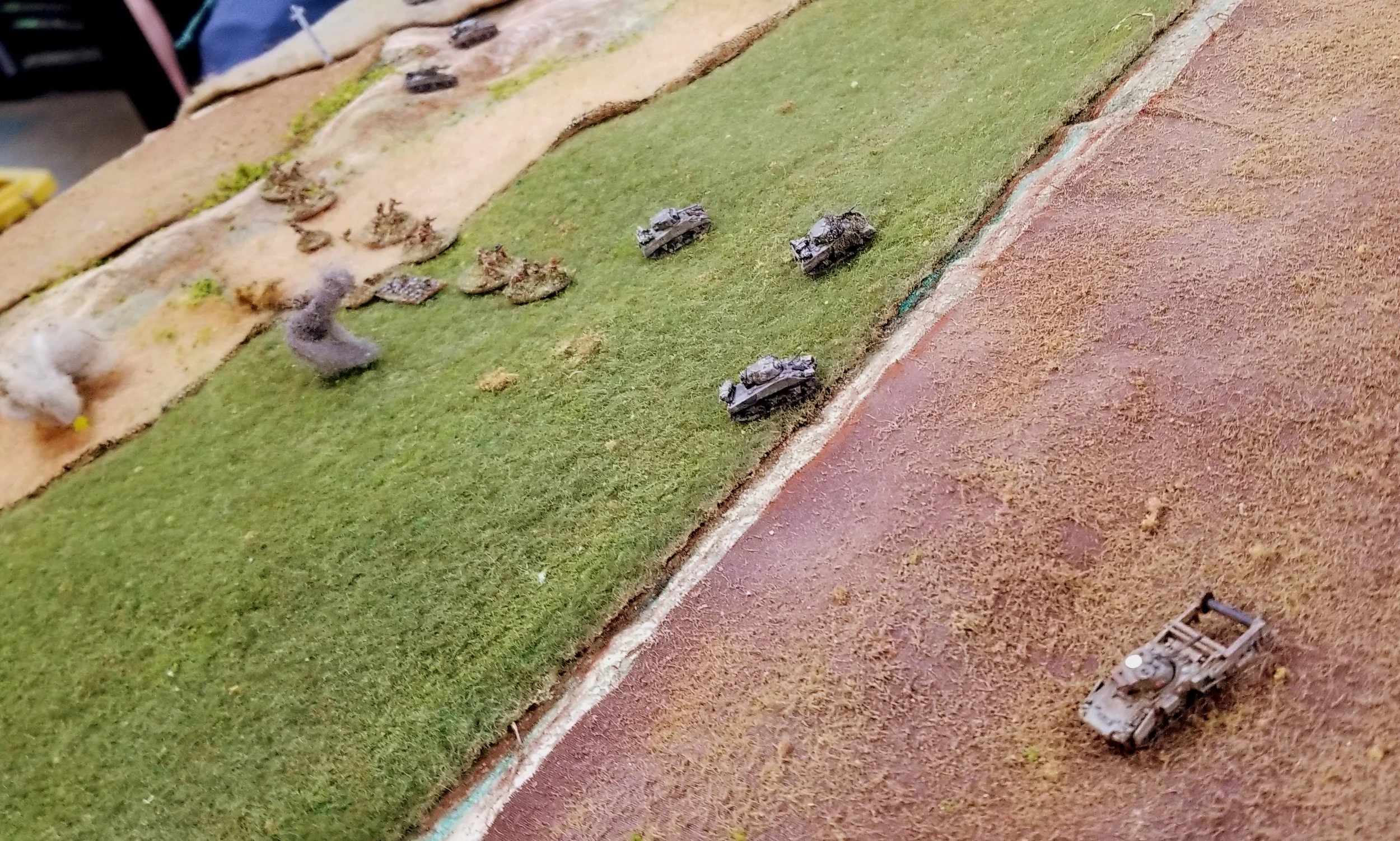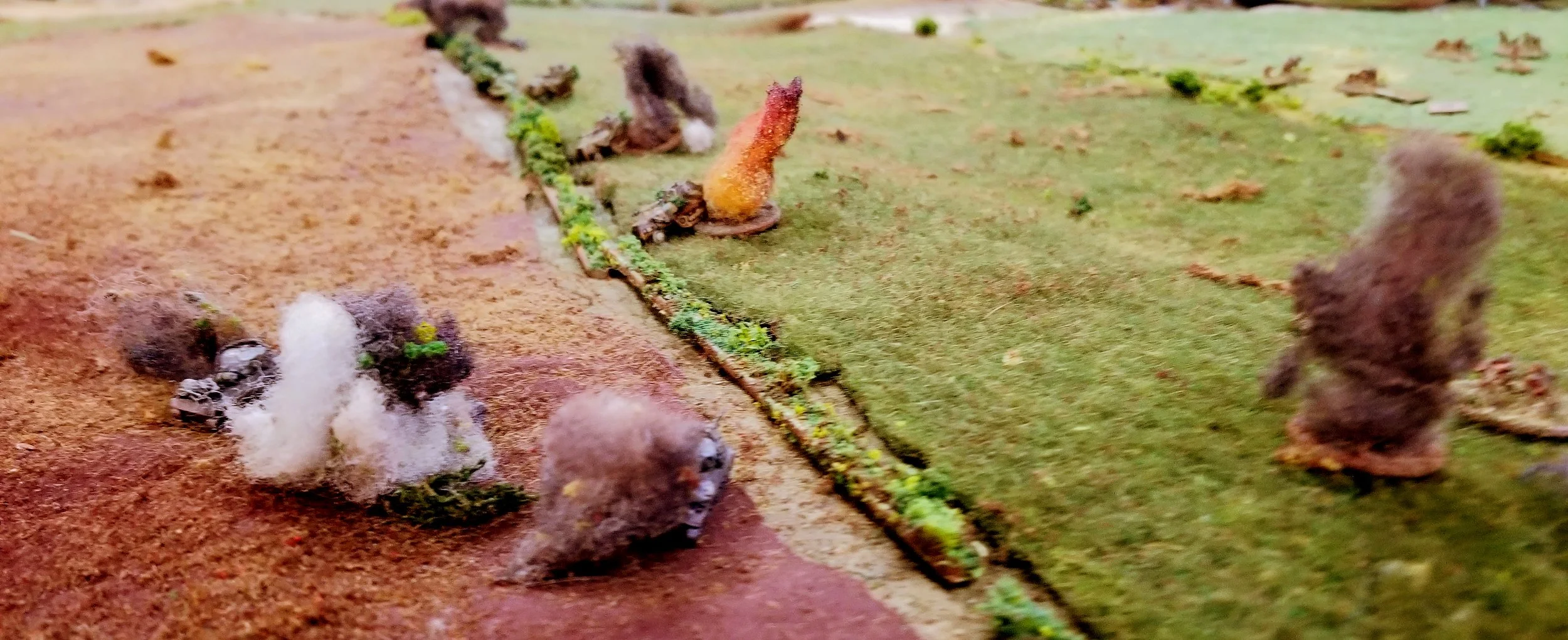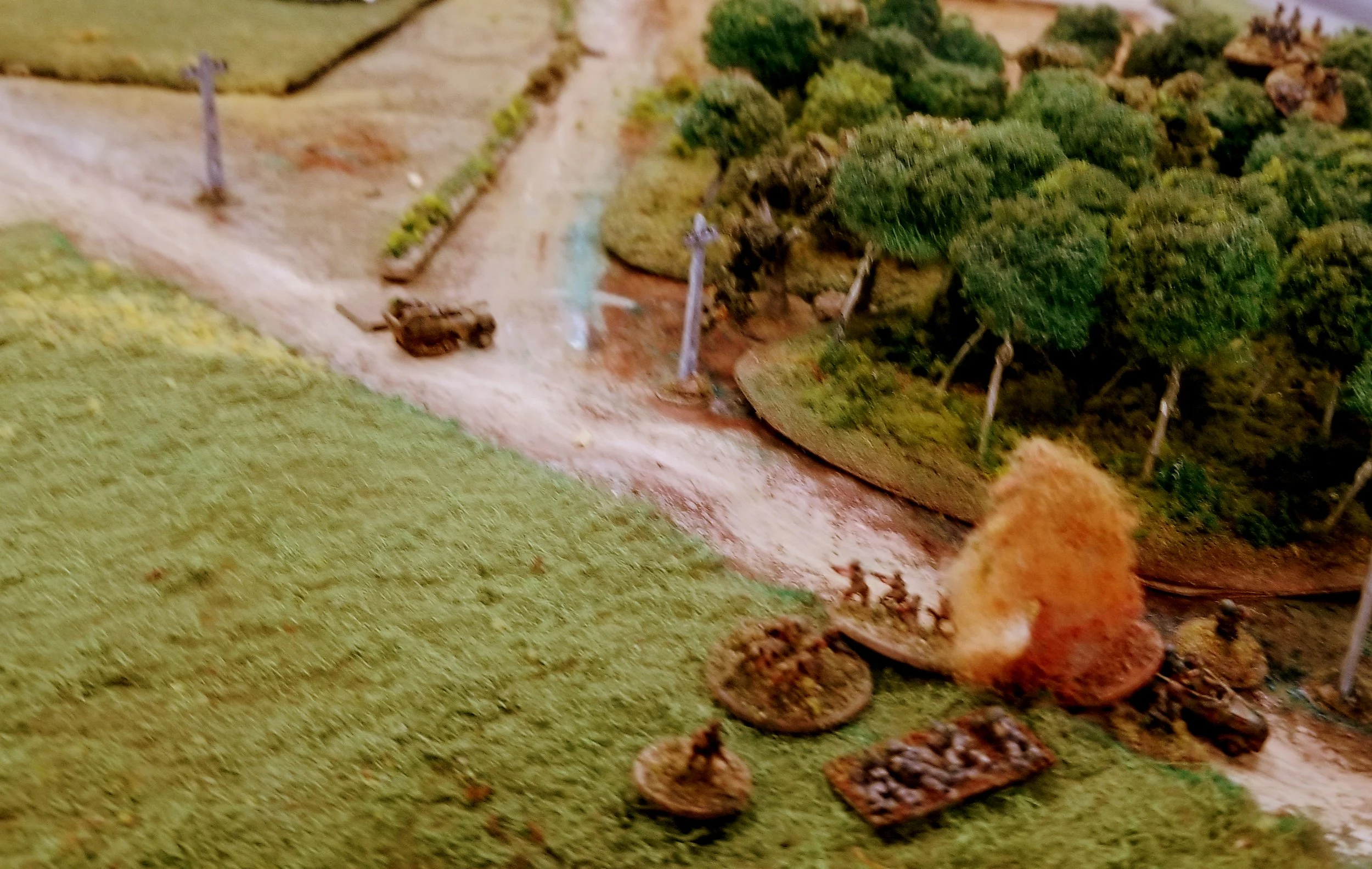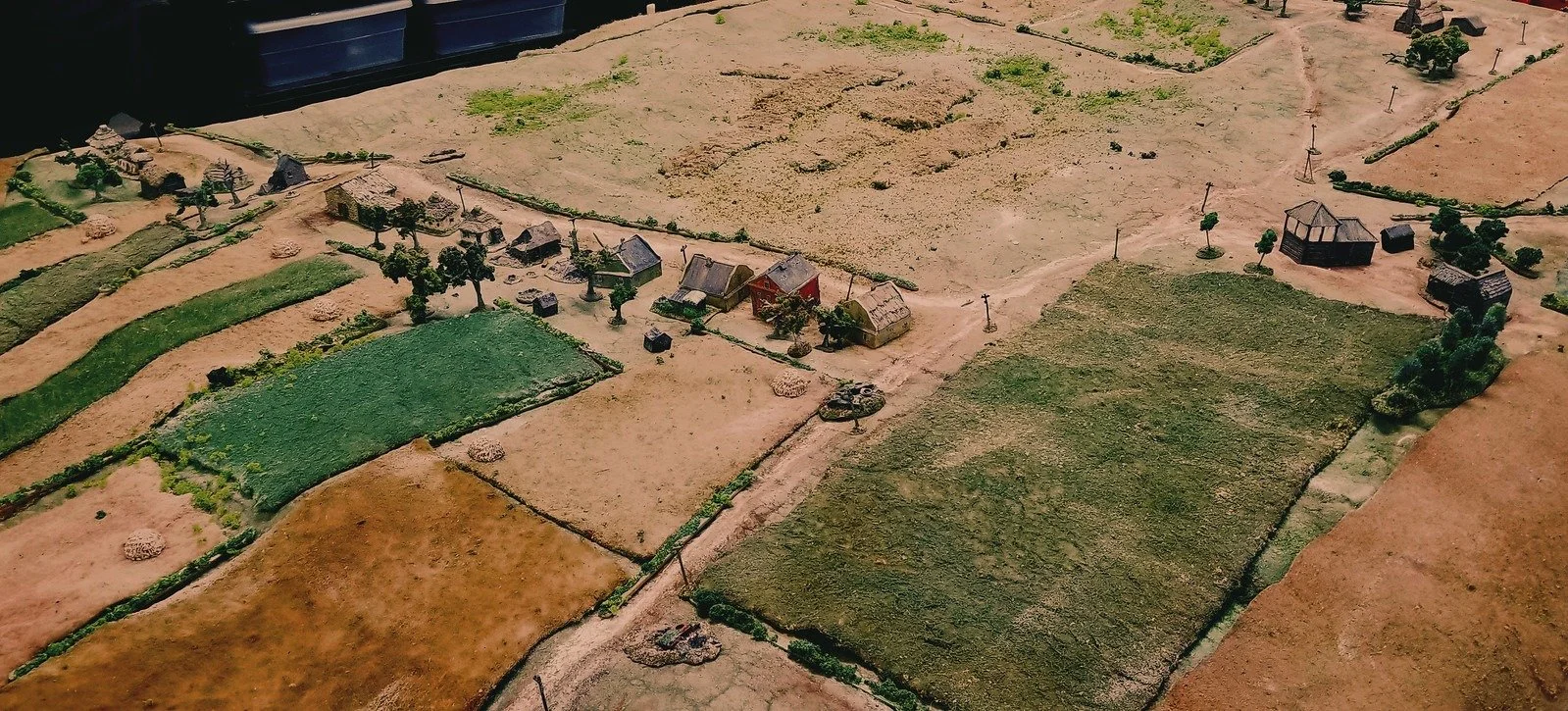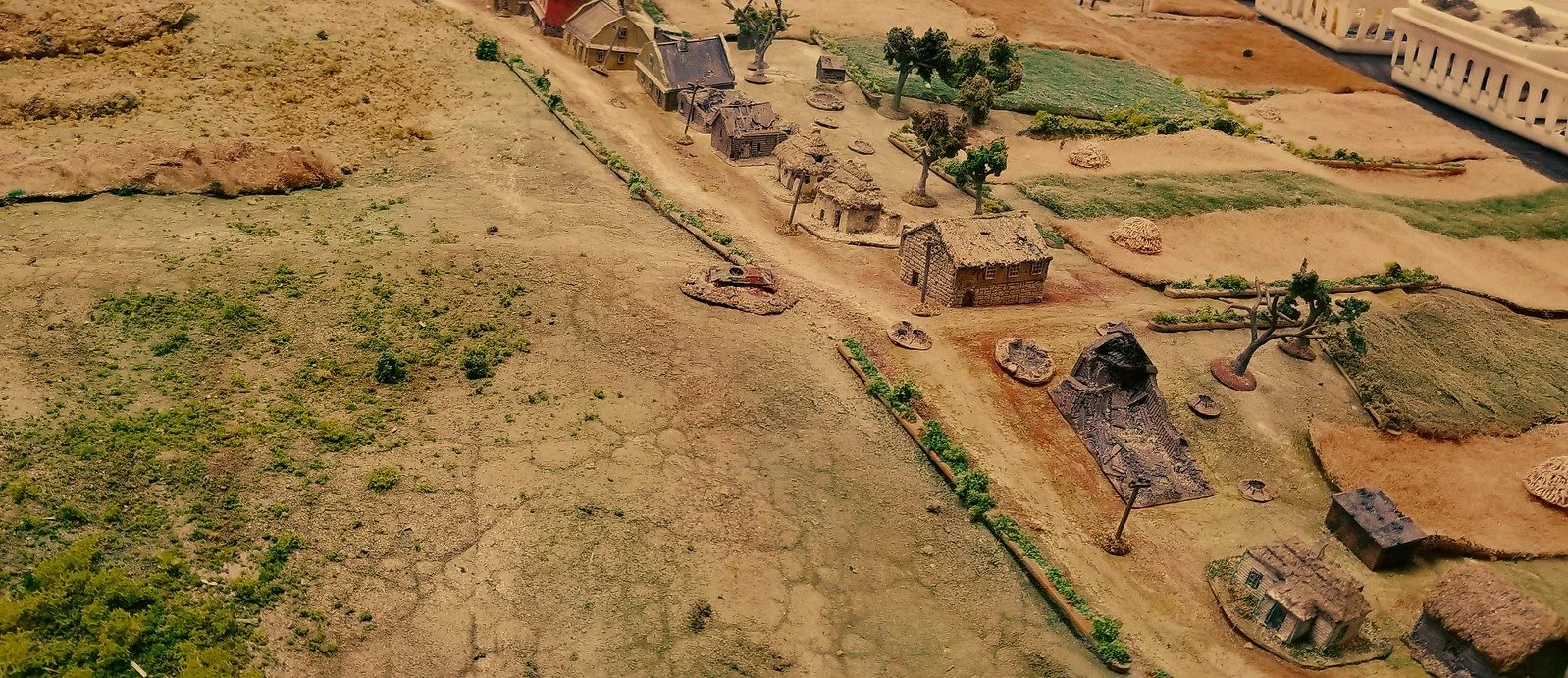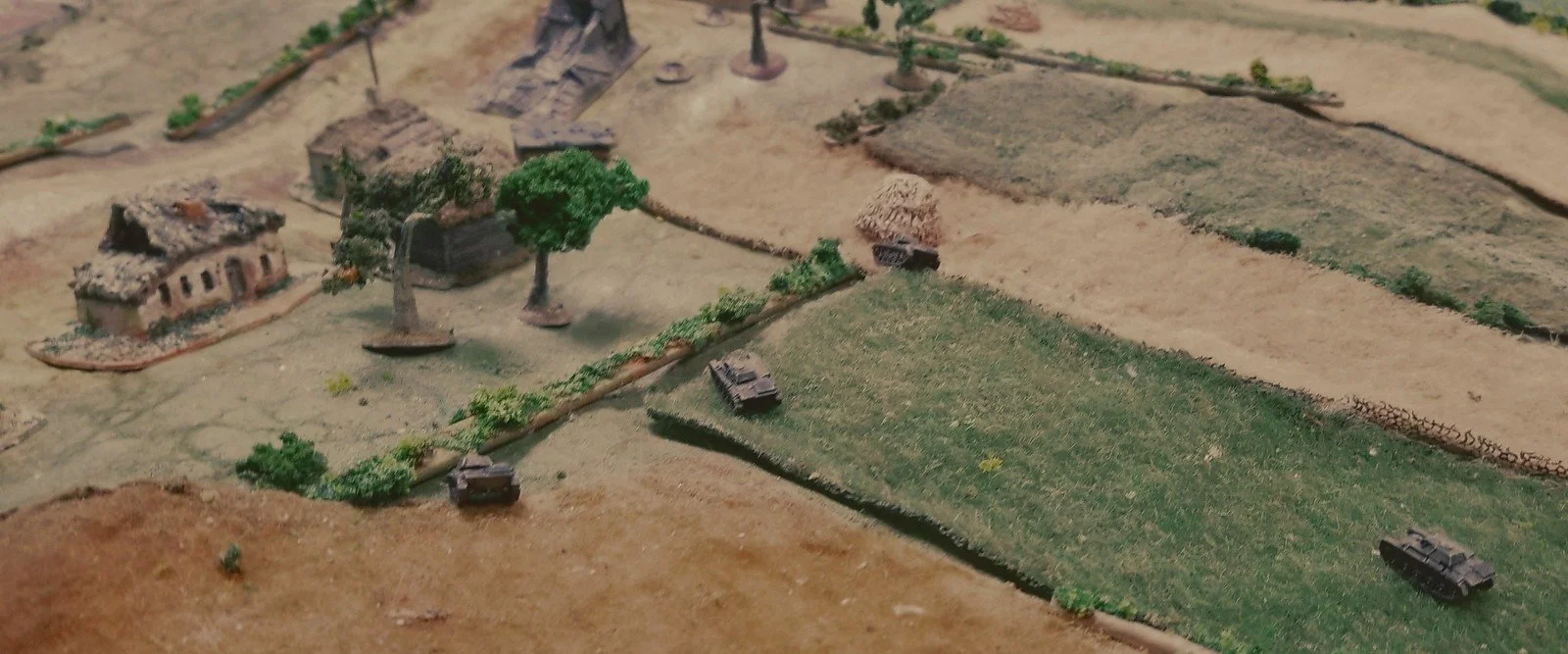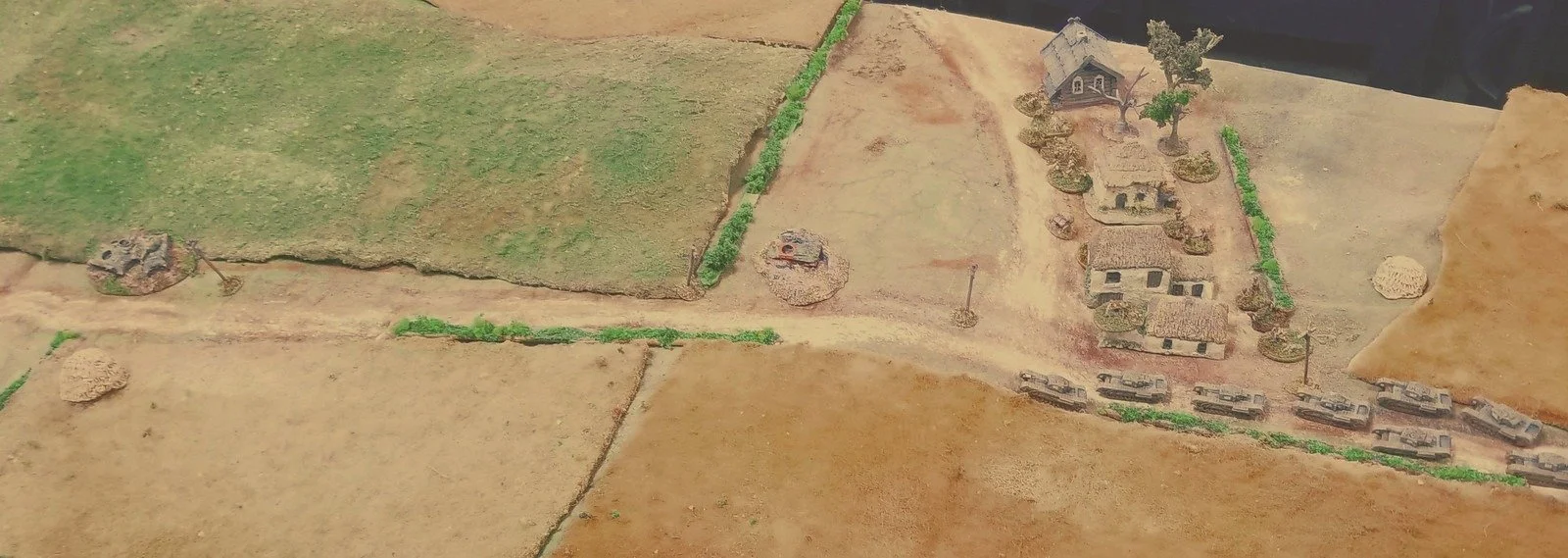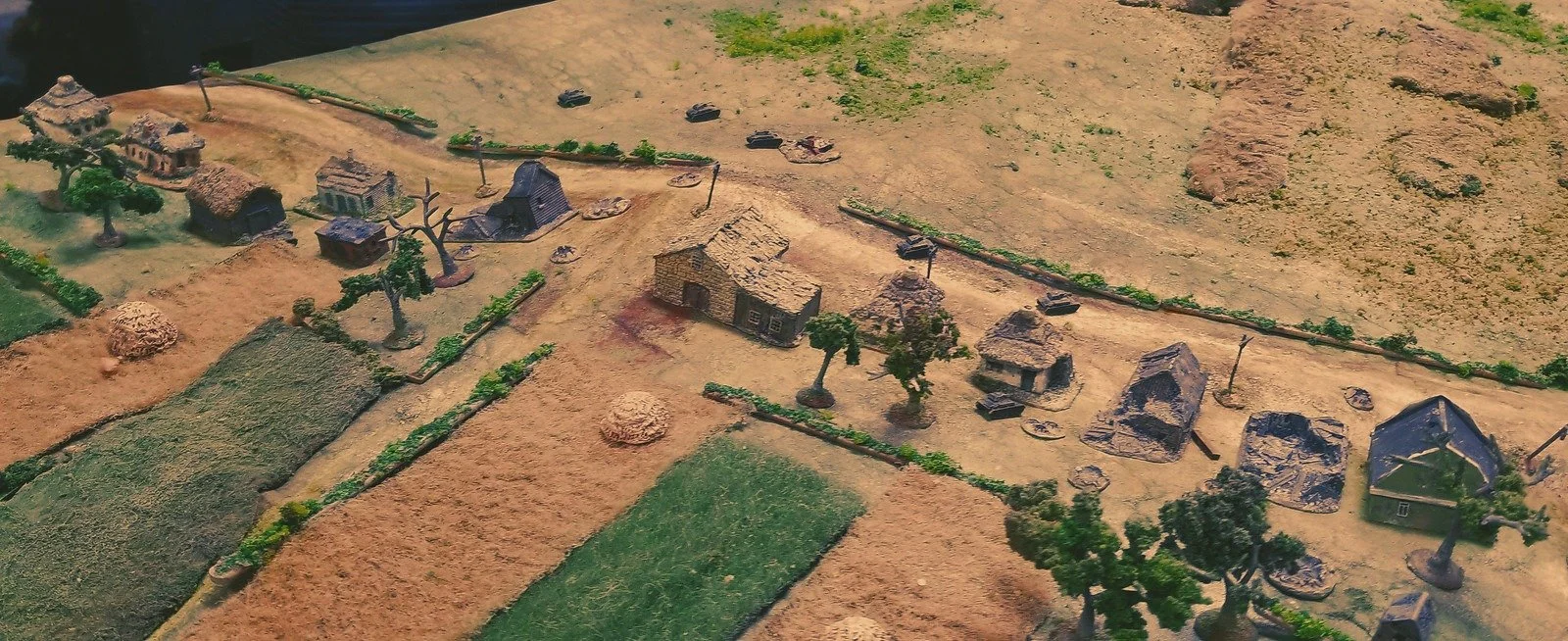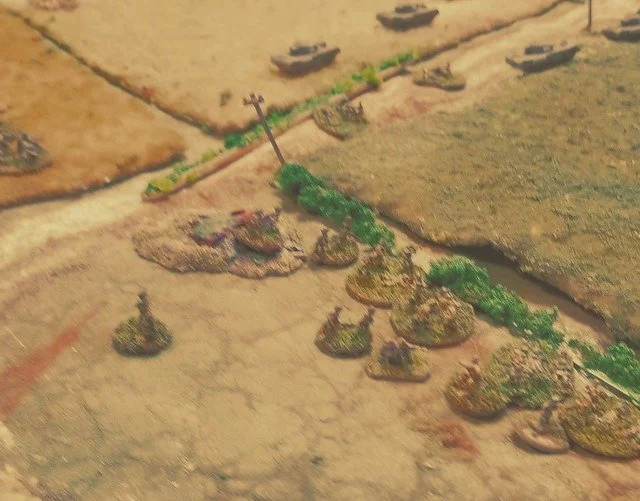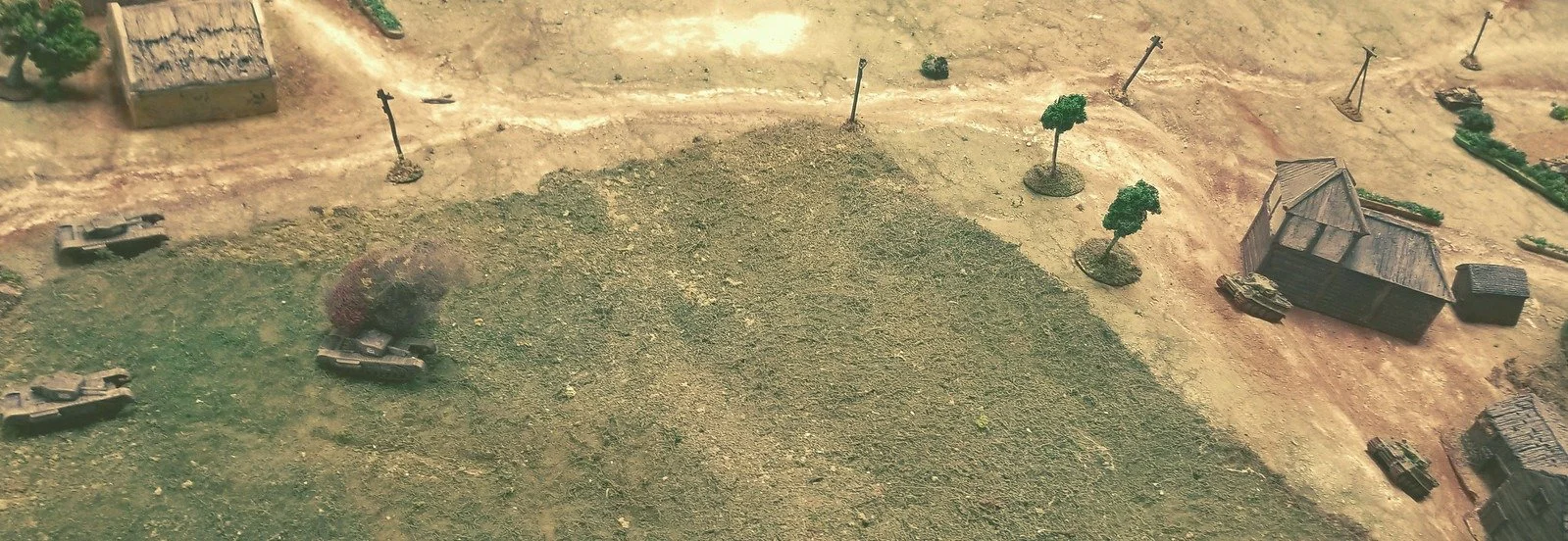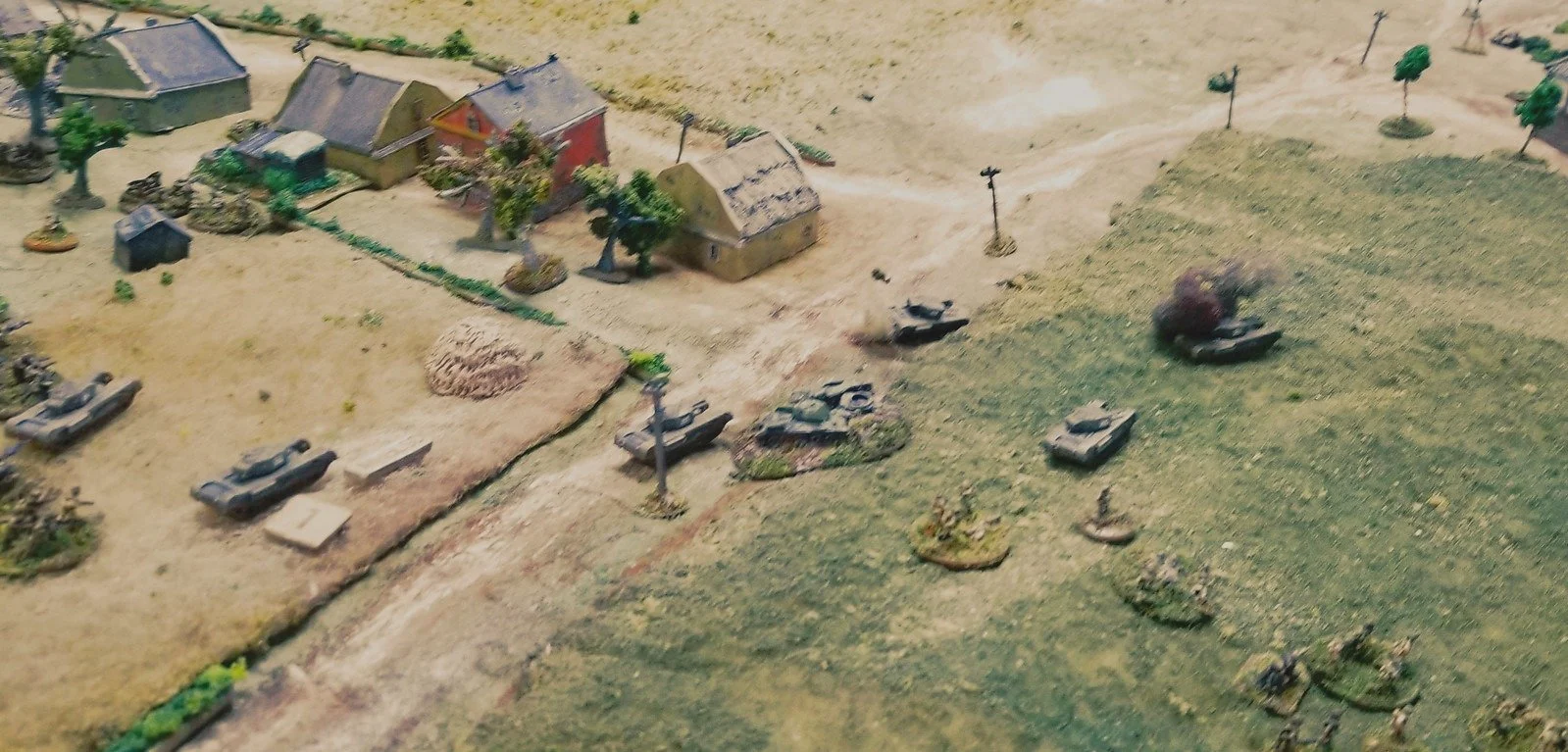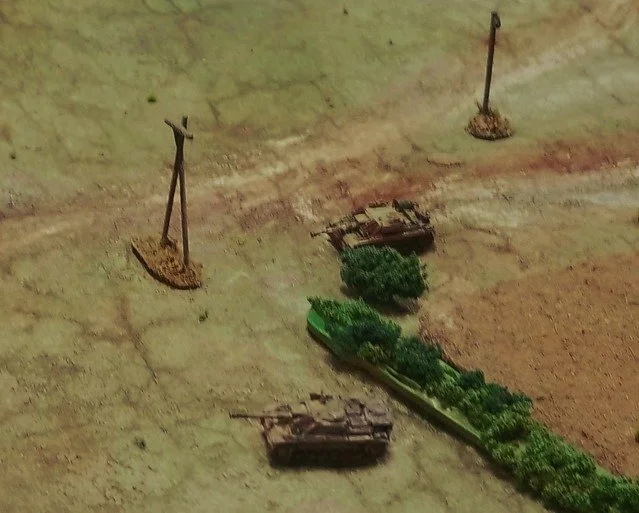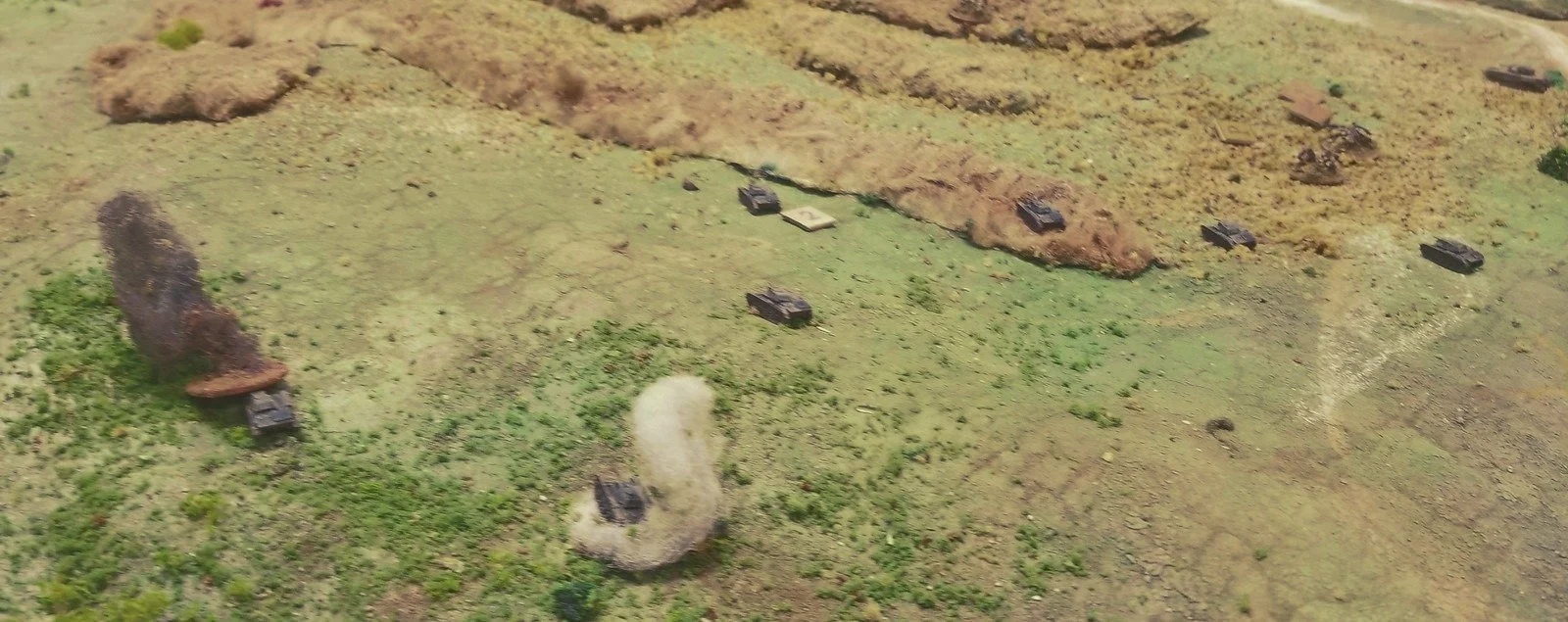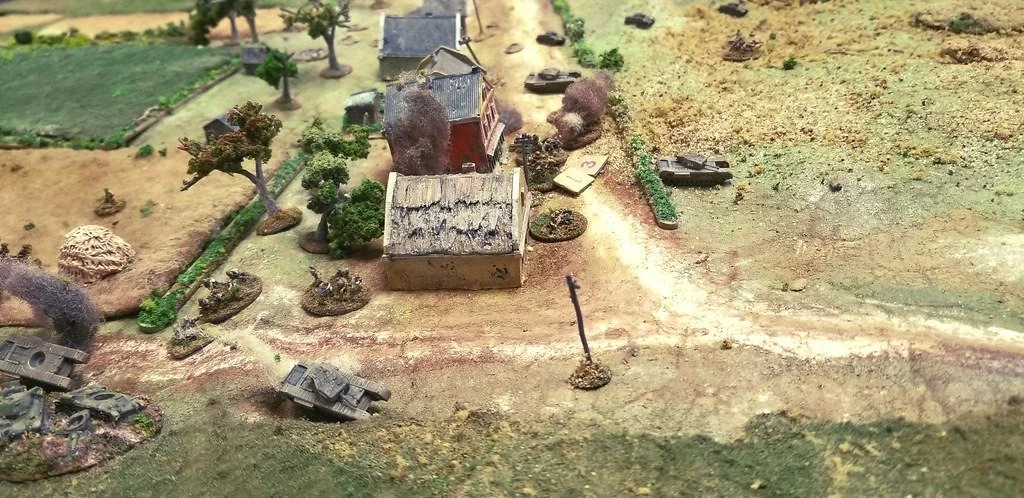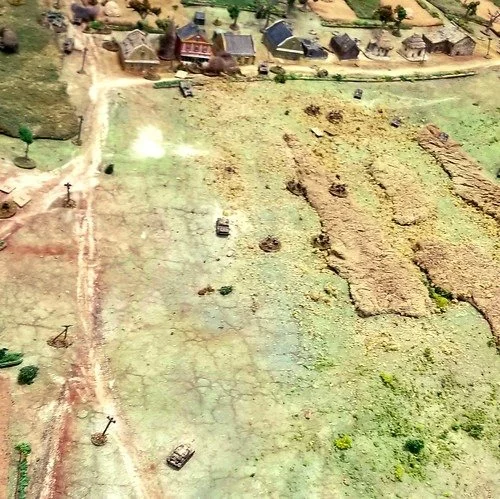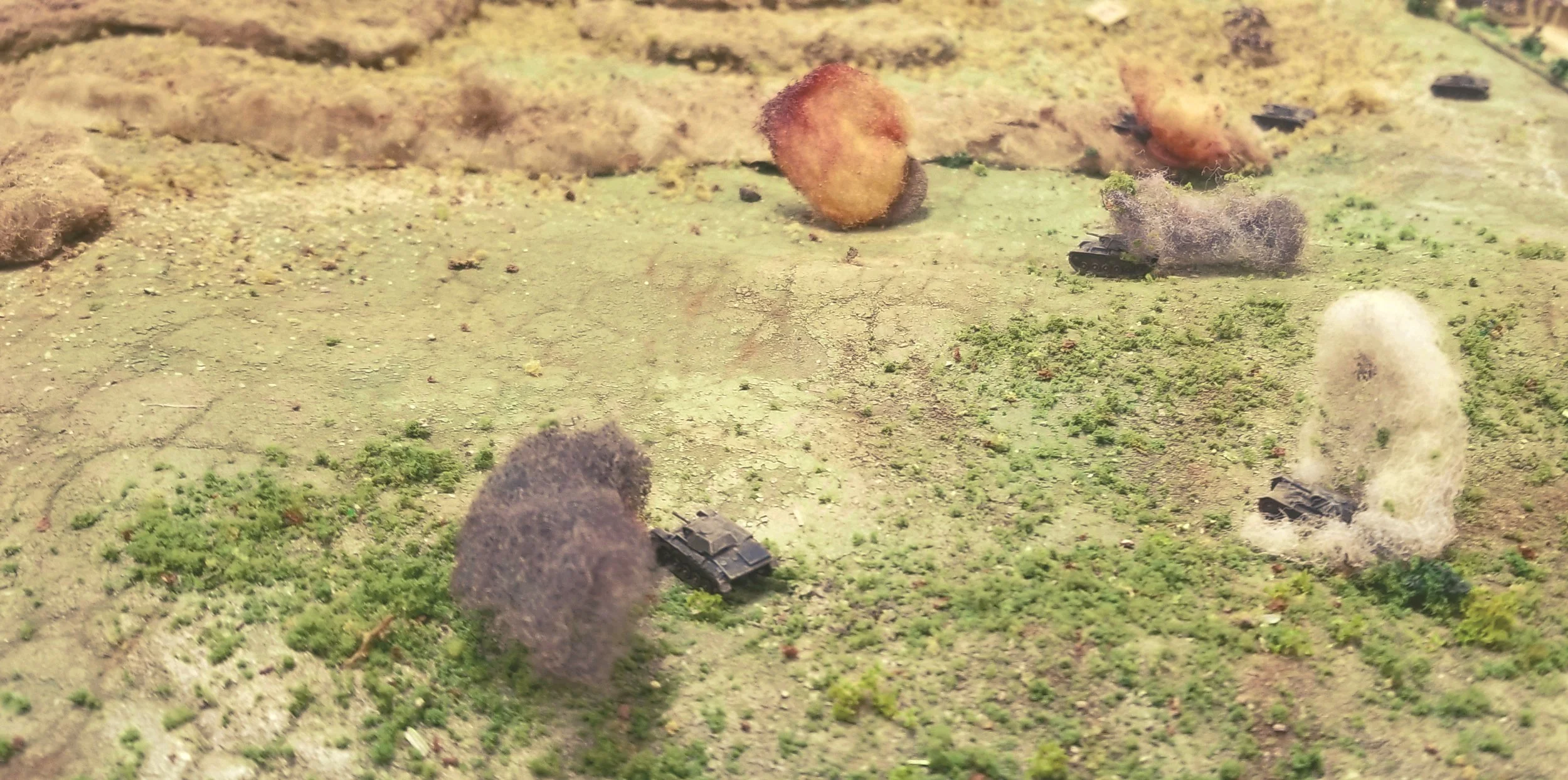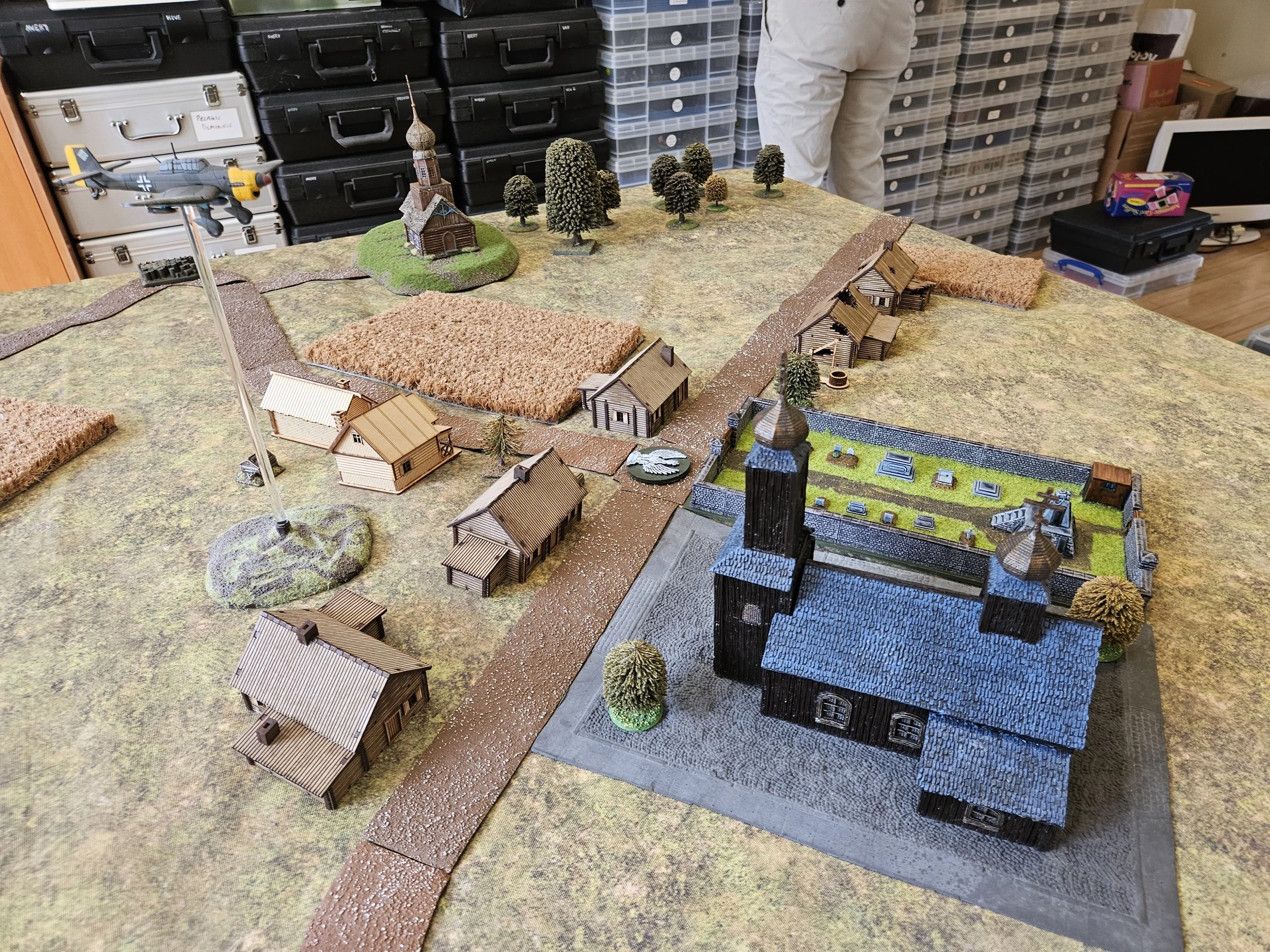Played a fantastic game of IABSM yesterday against my regular opponent, Neil, who was fresh from winning a Warmaster tournament.
Scenario 11 from the Sicilian Weekend supplement: The Gela Plain. In a desperate manoeuvre, tanks (unsupported by infantry) from the HG Division have broken through the thin Allied line forming the outer defences of the beachhead and now aim to get into the beachhead itself to cause chaos and disruption.
The scenario features fourteen German tanks (Pz IIIs and IVs) crossing a wide, open plain towards where a makeshift collection of Americans defend the line of the sand-dunes marking the edge of the beachhead. Forget the need for justifications based on logarismic scales: this is 75mm and 105mm guns firing over open sights! The only advantage enjoyed by the Allies are the six-inch guns from the cruiser, Boise, now only 3,000 yards from the shore, its crew taking constant, nervous soundings, and more off-table artillery from a battery of 155mm howitzers.
One platoon of four PzIIIs burst onto the plain and immediately began a firefight with the US artillery. Although the guns enjoyed the first shots, having been under Blinds, there was something defective about the HE they were firing (must have got wet on the journey in) and all that resulted was scratched panzer paint. In reply, HE shells killed one artilleryman, but had real difficulty doing any real damage because of the dampening effect of the sand dunes.
A platoon of PzIVs then arrived, and under cover of more HE from their colleagues, raced into close range and began spraying the artillery position with machine gun fire.
Backwards and forwards the luck went, with the odd panzer being KO'd in exchange for more artillerymen going to that great arsenal in the sky.
Meanwhile, the US Big Men had frantically been calling in fire support and, after a series of ranging shots, the ground shook as salvos from the Boise's mighty six-inch guns began landing. More German tanks had arrived, still under Blinds, and unluckily, one Blind was hit by a salvo from the Boise followed by a salvo from the off-table 155s! The Blind revealed itself as four more PzIIIs: only to discover that three had engine fires as a result of the tender ministrations of Madame Boise! All three would eventually burn out!
USS BOISE
The Americans had also received reinforcements in the form of a couple of Shermans from the 82nd Recon Company. One was knocked out fairly quickly, the other sent scurrying back to the beachhead with a turret jam. With his artillery running out of crew, things looked a bit bleak for the Yankee commander, so he leapt aboard the departing Sherman and used his Heroic Commander card to not only turn the tank around but also fix the turret jam. I must have been feeling especially generous: after all, how do you heroically fix a turret jam?
Anyhow, the surviving Germans (who needed to exit a certain number of tanks to win the game) and Americans were still hammering away at each other, the US Big Men too busy to ask the Boise for more help. Two combat engineer bazooka teams were shot down, but only after taking out a PzIV. It looked as if the Germans would suppress all resistance and just have enough tanks to win!
Even more desperate measures were called for. An American Big Man led out a squad of combat engineers armed with improvised anti-tank bombs into close combat with a PzIV. The tank was set on fire, but the Yanks shot down by another German tank spraying their comrade in an attempt to clear the pesky infantry away.
Finally another German tank took a good, clean, direct hit from the only surviving US gun, and went up in smoke. The Germans could no longer win a victory, so were forced to limp backwards off the table, leaving the carcasses of many, many burning tanks behind. The beachhead was held: but only just!
A great game that followed what happened historically almost exactly. If the Boise hadn't pulverised one PzIII platoon, the Germans would probably have broken through...but she did, and they didn't! If I say that all the Americans had left at the end of the game was one 105mm gun with two crew remaining, and a handful of infantry, it shows you just how close it was. As for the Germans...well, fourteen tanks went in and only two came out unscathed!
Robert Avery


